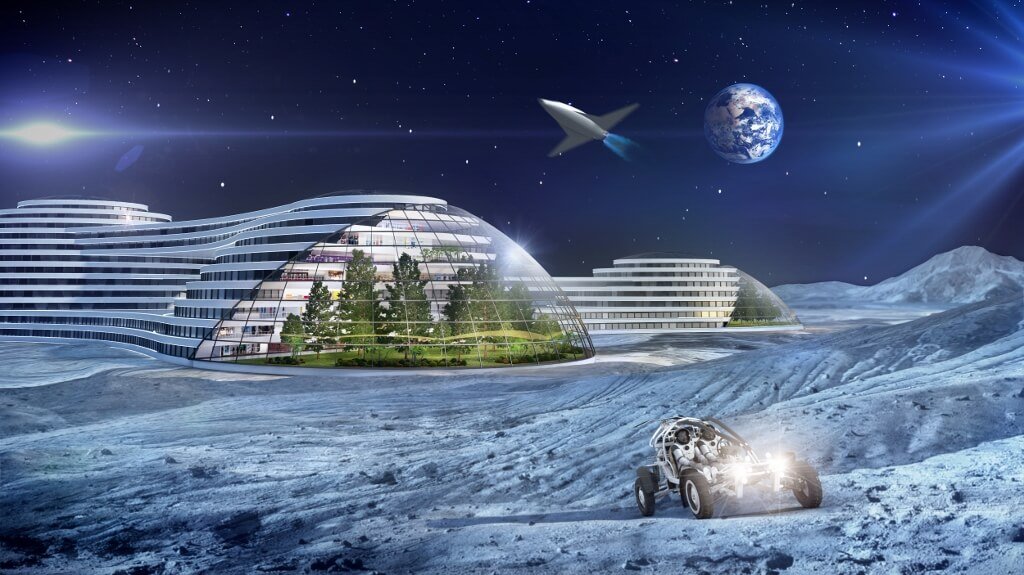
Could these be the megaprojects our descendants work on?
Super skyscrapers which will dwarf the Shard, underwater bubble cities and hyper-flexible living spaces are all likely to be reality in 100 years’ time. That’s the verdict of a new study which paints a vivid picture of our future lives – suggesting the way we live, work and play will change beyond all recognition over the course of the next century.
The SmartThings Future Living Report was authored by a team of leading academics including TV presenter – and one of the UK’s leading space scientists – Dr Maggie Aderin-Pocock, award-winning futurist architects and lecturers at the University of Westminster Arthur Mamou-Mani and Toby Burgess, as well as pioneering urbanists Linda Aitken and Els Leclerq.
The predictions for how we will live in the future have been brought to life via detailed animated architectural renders which show a futuristic London skyline where high rise apartments dwarf Europe’s highest building, The Shard, as well as showing drone transportation and bubble-like underwater cities.
Many of the predictions were influenced by environmental conditions, with growing populations leading to the development of structures that are better able to cope with space constraints and diminishing resources.
As city space becomes more squeezed, we will burrow deeper and build higher with the creation of:
As technology develops, we’ll see:
And finally, we will:
On top of looking at how we will live in 100 years’ time, SmartThings surveyed 2,000 British adults to pinpoint the predictions the nation thought were most likely to become a reality in the future. The survey shines a spotlight on the public perception of the future, and suggests that building further into the sky and colonising oceans are believed to be the biggest future trends as space and resources become scarce.
Space Scientist Maggie Aderin-Pocock, who co-authored the report, commented: “Our lives today are almost unrecognisable from those a century ago. The internet has revolutionised the way we communicate, learn and control our lives. Just ten years ago, technology like SmartThings would have been inconceivable, yet today, developments like this let us monitor, control and secure our living spaces with the touch of a smartphone. Over the next century we will witness further seismic shifts in the way we live and interact with our surroundings – working on The SmartThings Future Living Report with a panel of industry experts, has allowed me to explore what these could be.
James Monighan, UK MD of Samsung SmartThings, which commissioned the report, says:“The smart home revolution will have massively positive implications on how we live. Our homes are becoming smarter and can now detect the presence of things like people, pets, smoke, humidity, lighting, and moisture. And this is just the beginning.
Just as the technology driving the Internet has spread to smartphones and smart homes, the smart home revolution is destined to spread to larger communities and countries. By simply turning lights and heating off when we don’t use them, we can reduce emissions. By being able to better monitor and secure our homes, we can reduce crime. By better monitoring the habits of aging relatives, we help them to achieve greater independence and a higher quality of life.”
The report has been published to coincide with the announcement that from the start of 2016, SmartThings will work with hundreds of products from a wide range of brands, as well as working with all of Samsung’s TVs, refrigerators, washing machines, ovens and robot vacuum cleaners.
The full SmartThings Future Living Report is available to read and download at www.samsung.com/uk/smartthings